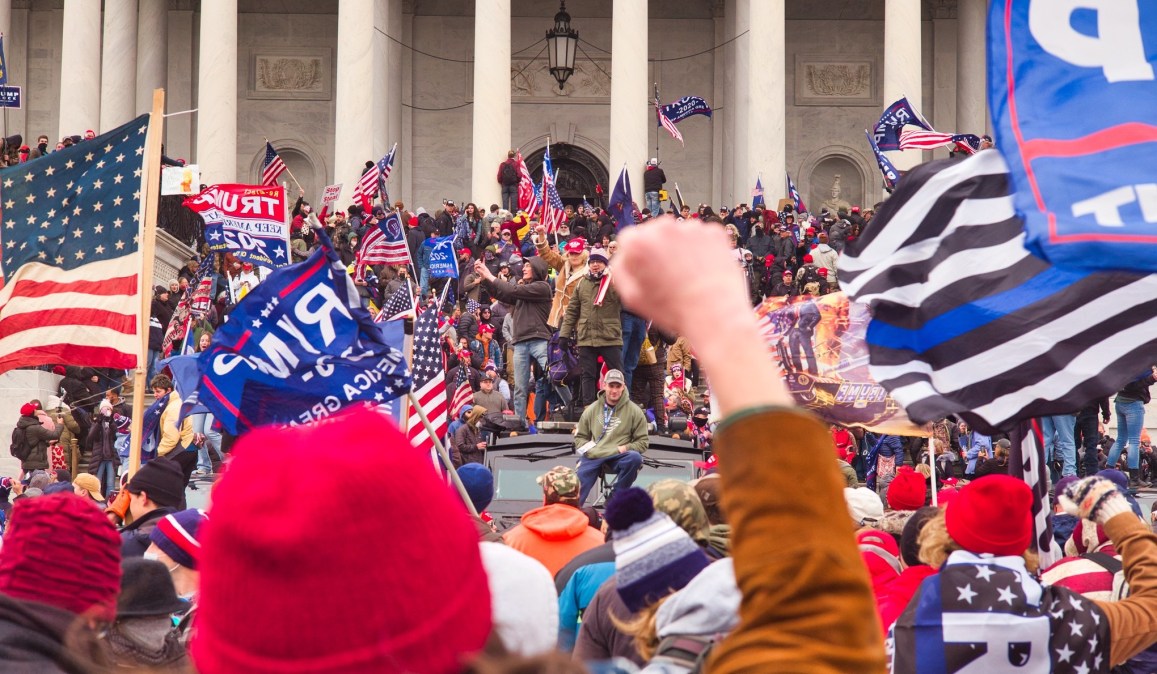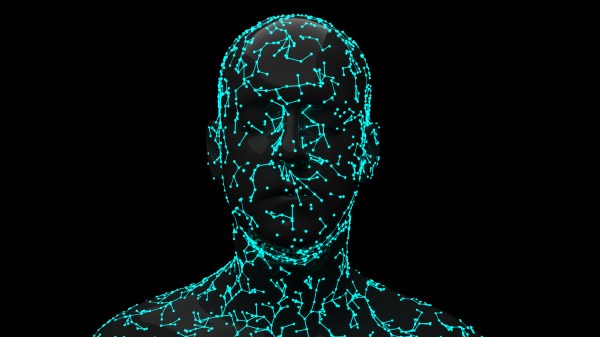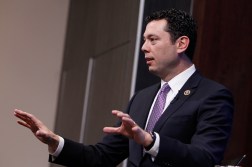‘It’s not going to be very hard to ID them’: Feds have tools to easily track down Capitol rioters

As a riotous mob of Trump supporters filled the U.S. Capitol building Wednesday, many left plum digital footprints federal law enforcement agencies can easily use to track them down and charge them.
The FBI has some of the most powerful facial recognition systems in the country, according to outside experts. And because few arrests were made during the deadly unrest, law enforcement officials will now have to depend on that technology to speed up the process of tracking apparent criminals through the many videos, images and other digital “fingerprints” they left behind.
Paired with the reams of open source information, the FBI has the technology to easily identify possible criminals, rather than having to manually connect the dots, a former FBI official told FedScoop.
“For most people [that were] there, it is not going to be very hard to ID them,” the official said.
Some of the suspects are making it easier than others, like the man who put his feet up on House Speaker Nancy Pelosi’s desk and took a letter from her office. He volunteered his name and hometown to the media, and Friday, he was arrested by the FBI.
“This arrest demonstrates to all individuals involved in January 6 incursion into the U.S. Capitol that the FBI will find you and hold you accountable for your crimes, no matter your location,” the FBI said in a statement.
The FBI has set up a portal for the public to send videos and images that can be used to track down and investigate those who appeared to violently trespass in the Capitol. It’s unclear how other agencies — like the Capitol Police that bore the brunt of Wednesday’s insurrection and is charged with protecting the campus — are working together on the technical front.
The bureau has two facial recognition programs in its Criminal Justice Information Services (CJIS) Division: the Next Generation Identification (NGI) System and the Facial Analysis, Comparison, and Evaluation (FACE) Services Unit, according to congressional testimony in 2019.
The technology, in general, has advanced to a place where even long livestreamed videos from the event could theoretically be extracted and used to generate high-confidence identification of people in footage, Shaun Moore, CEO of facial recognition company TrueFace, told FedScoop. He added that with multiple angles and tattoo-recognition, accuracy increases.
The same is true for social media photos, according to Clearview AI founder Hoan Ton-That.
“If there is a photo that is as small as 110×110 pixels, of reasonable quality, Clearview AI’s customers are able to accurately search and help identify that person,” he told FedScoop. The company, which has faced controversy over its data-scraping practices, has over 2,400 law enforcement customers in the United States, including the Department of Homeland Security and the FBI.
But law enforcement might not even need something that powerful. Many high-quality photos exist of maskless rioters, many posted by the very people who broke the law by storming the Capitol. And the odds aren’t in their favor: Many of the people in photos and videos taken during the insurrection appear to be white males — a group that facial recognition tends to more accurately identify, according to a study on the technology’s bias by the National Institute of Standards and Technology.
There are few if any legal boundaries on how facial recognition can be used in an investigation, Jake Laperruque, senior counsel at the Project for Government Oversight, told FedScoop. The FBI’s internal policy is to use the technology only for open investigations and internal assessments, Laperruque added. Besides that, the agency can start running images through its facial recognition systems to identify rioters.
“The FBI probably has the most powerful facial recognition [technology] in the country,” Laperruque said.
Otherwise, most regulations on the technology’s use are at the state and local level, like a wide-reaching and comprehensive law in Washington state that put guardrails on the government’s use of the technology. Sen. Ed Markey, D-Mass., introduced a bill last June after the Black Lives Matter protests to curb the use of biometric technology and facial recognition, but it failed to make it past committee.
For the complex jurisdiction of Washington, D.C., evidence from a 2020 court case involving Black Lives Matter demonstrators who were cleared from Lafayette Square on June 1 revealed the existence of a facial recognition system built by the Metropolitan Washington Council of Governments. The National Capital Region Facial Recognition Investigative Leads System (NCRFRILS) has been used more than 12,000 times since 2019 and has a database with 1.4 million people, according to reporting from the Washington Post. The program, which never exited a pilot phase, was funded until December and it’s unclear whether law enforcement could use the tool to identify Capitol rioters.




